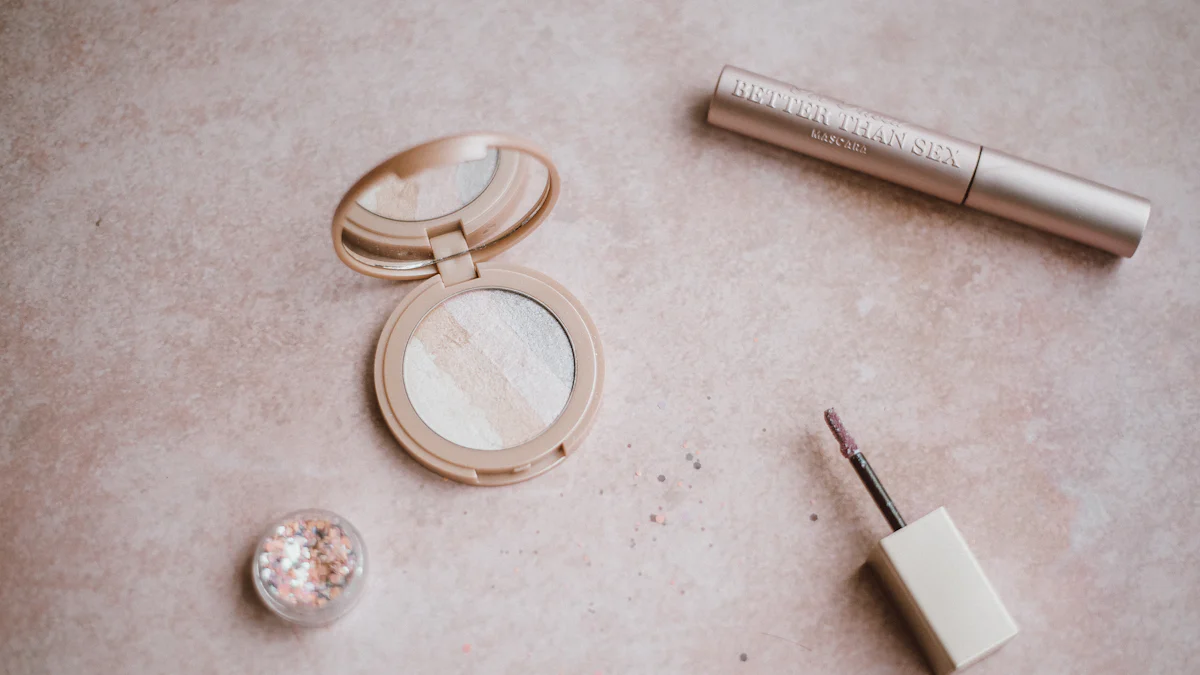What Causes Jewelry to Rust and How to Stop It

Jewelry rusts when exposed to air, moisture, and chemicals. You might notice your favorite pieces losing their shine over time. This happens because jewelry rusts due to reactions with elements in the environment. Moisture in the air can speed up this process. Chemicals from perfumes or lotions also play a role. When jewelry rusts, it loses its appeal and value. Understanding why jewelry rusts helps you take steps to prevent it. By knowing these causes, you can keep your jewelry looking new and beautiful for longer.
Causes of Jewelry Rusting
Exposure to Air and Moisture
Jewelry rusts primarily due to its interaction with air and moisture. When you wear jewelry, it comes into contact with the air, which contains oxygen and sulfur. These elements react with metals like silver and copper, causing tarnish. Moisture in the air accelerates this process. Humidity, a common environmental factor, increases the rate at which jewelry rusts. If you live in a humid climate, your jewelry may tarnish faster.
Pollution also plays a role. Pollutants in the air can settle on your jewelry, leading to discoloration and rust. Keeping your jewelry dry and clean helps reduce these effects. Store your pieces in a dry place to minimize exposure to air and moisture.
Chemical Exposure
Chemicals from everyday products can cause jewelry to rust. Perfumes, lotions, and even your skin's natural oils can react with the metal surface. When you apply these products, they leave residues that interact with the jewelry. This interaction leads to tarnishing over time.
Your skin's pH level can also influence how quickly jewelry rusts. A higher acidity level can speed up the tarnishing process. To protect your jewelry, apply lotions and perfumes before putting on your pieces. This simple step reduces direct chemical exposure.
Regular cleaning helps maintain your jewelry's shine. Use a soft cloth to wipe away any residues after wearing your pieces. This practice prevents chemicals from building up and causing rust.
Types of Jewelry Most Susceptible to Rusting
Silver Jewelry
Silver jewelry often catches the eye with its bright and shiny appearance. However, it is highly prone to tarnishing. When silver jewelry rusts, it reacts with sulfur compounds in the air. This reaction forms a dark layer on the surface, diminishing its luster. Humidity and pollution can accelerate this process. To keep your silver jewelry looking its best, store it in a dry place. Use anti-tarnish strips or cloths to absorb moisture and sulfur. Regular cleaning with a soft cloth can also help maintain its shine.
Gold Jewelry
Gold jewelry, especially those with lower karat ratings, can also experience tarnishing. Pure gold does not rust, but when mixed with other metals like copper or silver, it becomes susceptible. These alloys react with air and moisture, leading to discoloration. If your gold jewelry rusts, it may lose its appeal. To prevent this, store gold pieces separately in a soft pouch or lined box. Avoid exposing them to harsh chemicals found in cleaning products or cosmetics. Regular polishing can help retain their brilliance.
Costume Jewelry
Costume jewelry, made from non-precious metals, plastics, and glass, is particularly vulnerable to rusting. These materials lack the durability of precious metals like gold and silver. When costume jewelry rusts, it often results in noticeable wear and tarnish. Moisture and chemicals from perfumes or lotions can speed up this process. To protect your costume jewelry, keep it dry and clean. Store it in a cool, dry place away from direct sunlight. Consider using silica gel packets to absorb excess moisture. Regularly wipe down your pieces with a soft cloth to remove any residues.
Environmental and Chemical Factors
Environmental Conditions
Environmental conditions play a significant role in how quickly jewelry rusts. Air pollution is a major factor. Pollutants in the air, such as sulfur compounds, can settle on your jewelry. These compounds react with metals, leading to tarnishing. Moisture in the environment also accelerates this process. High humidity levels increase the rate at which jewelry rusts. If you live in a humid area, your jewelry may tarnish faster than in drier climates.
Acidity in the air contributes to jewelry rusting as well. Acid rain, caused by industrial pollution, can affect the surface of your jewelry. This acidic moisture reacts with metals, causing them to lose their shine. To protect your jewelry, store it in a dry place. Use airtight containers or anti-tarnish strips to minimize exposure to harmful environmental elements.
Chemical Reactions
Chemical reactions are another reason why jewelry rusts. When metals come into contact with certain chemicals, they undergo oxidation. This process involves the metal reacting with oxygen, forming a tarnished layer on the surface. Everyday products like perfumes, lotions, and even your skin's natural oils can trigger these reactions. When you apply these products, they leave residues that interact with your jewelry, causing it to tarnish over time.
Your skin's pH level can also influence how quickly jewelry rusts. A higher acidity level can speed up the tarnishing process. To minimize chemical reactions, apply lotions and perfumes before wearing your jewelry. This reduces direct contact between the chemicals and the metal surface. Regular cleaning is essential to maintain your jewelry's shine. Use a soft cloth to wipe away any residues after wearing your pieces. This practice prevents chemicals from building up and causing rust.
Preventing Jewelry Rust
Proper Storage Techniques
Proper storage plays a crucial role in preventing jewelry rust. You should store your jewelry in a dry, airtight container to minimize exposure to air and moisture. Anti-Tarnish Packaging can be particularly effective. These packages, such as rust preventative strips or bags, absorb substances that cause oxidation. By using them, you help maintain the shine and value of your jewelry.
Consider storing each piece separately to avoid scratches and tangling. Use soft pouches or lined boxes for this purpose. If you handle your jewelry frequently, wear cotton gloves to minimize tarnishing. This simple step can make a significant difference in preserving your jewelry's appearance.
Regular Cleaning Practices
Regular cleaning is essential to keep your jewelry looking its best. Use mild soap and a soft cloth to clean your pieces gently. Avoid harsh chemicals that can damage the metal surface. After cleaning, ensure your jewelry is completely dry before storing it.
For rusted areas, a Baking Soda Cleaning Solution can be effective. Mix equal parts of baking soda and water to create a thick paste. Apply the solution to rusted areas using a toothbrush or small brush. Make sure to cover all crevices and grooves where rust may be present. Always test on a small area before cleaning the entire piece to ensure compatibility.
Avoid wearing jewelry during activities that expose it to water and sweat, such as showering, swimming, or exercising. Keep your pieces away from cleaners with chlorine bleach. Apply lotions and perfumes before putting on your jewelry to reduce chemical exposure. By following these practices, you can significantly extend the life and beauty of your jewelry.
How to Clean Rusted Jewelry
Cleaning rusted jewelry can seem daunting, but it's essential for maintaining the beauty and longevity of your pieces. When jewelry rusts, it loses its shine and appeal. You can restore it with the right techniques and tools. Here's how you can clean different types of rusted jewelry effectively.
Cleaning Silver Jewelry
Silver jewelry often tarnishes due to its reaction with sulfur compounds in the air. To clean rusted silver jewelry, you need a few simple materials:
Baking Soda and Water: Create a paste by mixing equal parts of baking soda and water. This mixture acts as a gentle abrasive to remove tarnish.
Soft Cloth or Toothbrush: Use these tools to apply the paste to the rusted areas. Gently rub the surface to lift the tarnish.
Rinse and Dry: After cleaning, rinse the jewelry under warm water. Ensure you dry it thoroughly with a soft cloth to prevent further rusting.
Jewelry Cleaning Expert: "Cleaning rusted jewelry can be a tricky task, but it is essential to maintain the beauty and longevity of your precious pieces."
Cleaning Gold Jewelry
Gold jewelry, especially those with lower karat ratings, can tarnish when mixed with other metals. Here's how you can clean rusted gold jewelry:
Mild Soap and Warm Water: Mix a few drops of mild soap with warm water. This solution helps remove dirt and rust without damaging the gold.
Soft Cloth or Brush: Dip a soft cloth or brush into the soapy water. Gently scrub the rusted areas to remove tarnish.
Rinse and Polish: Rinse the jewelry with clean water and dry it with a soft cloth. Use a jewelry polishing cloth to restore its shine.
Cleaning Costume Jewelry
Costume jewelry, made from non-precious metals, is particularly susceptible to rusting. To clean rusted costume jewelry, follow these steps:
Vinegar and Baking Soda: Combine vinegar and baking soda to create a cleaning solution. This mixture helps dissolve rust without harming the jewelry.
Soak and Scrub: Soak the jewelry in the solution for a few minutes. Use a toothbrush to scrub the rusted areas gently.
Rinse and Dry: Rinse the jewelry thoroughly with water. Dry it completely to prevent further rusting.
By following these methods, you can effectively clean rusted jewelry and restore its original shine. Regular maintenance and proper care are crucial because jewelry rusts when exposed to air, moisture, and chemicals. Keep your pieces looking beautiful by cleaning them regularly and storing them properly.
Regular maintenance and proper care are essential to prevent jewelry rusts. By understanding the causes, you can implement preventive measures that extend the life of your jewelry. Store your pieces in a dry environment and avoid exposure to harsh chemicals. Regular cleaning with appropriate solutions helps maintain their shine and integrity. Cleaning rusted jewelry requires specific techniques tailored to the material. With the right tools and methods, you can restore your precious pieces to their original shine. By being proactive, you protect your investments and ensure your jewelry rusts less frequently, preserving its beauty for years.
See Also
Effective Methods For Cleaning Lab Grown Diamonds
Fast And Secure Ways To Sell Your Engagement Ring
Exploring The Charm Of Diamond Dust Rings

